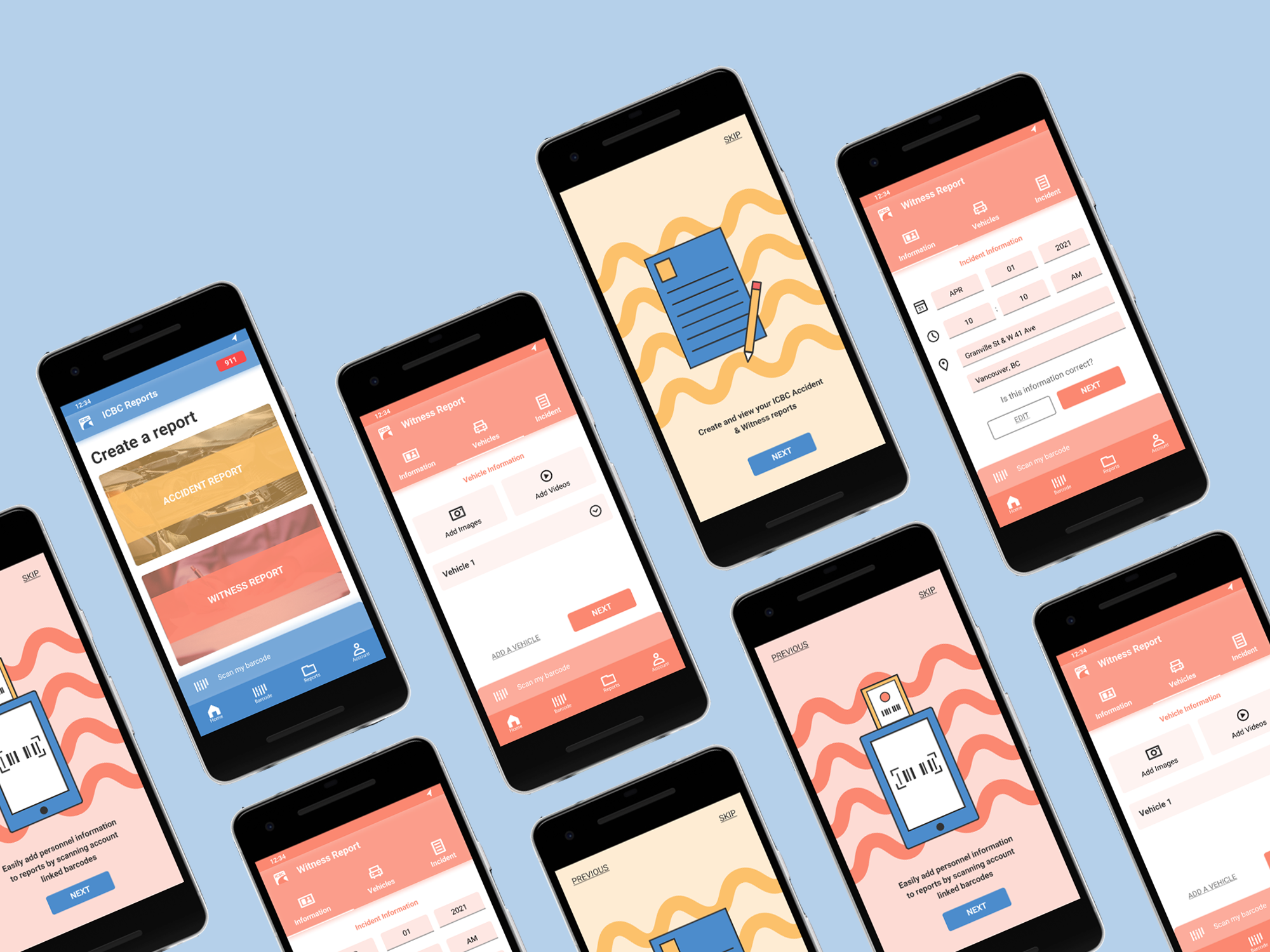
How can I better help people who have been or recently been involved in a car accident?
As a fairly new driver and someone who has never been in a car accident, the thought of being involved in one terrifies me. For the initial app idea, it was centered around finding a way for people to easily collect the correct information needed after they’ve been in an accident because of the high level of stress and anxiety that comes with being in an accident. This would ensure that all necessary information was filed and organized for later use when filing a claim with ICBC. By doing so, this would hopefully allow for ICBC to streamline their procedure in claim processing so that their clients can move forwards from the accident.
However after conducting background research, the problem question was reframed to:
“How can people easily collect accident information and/or submit witness reports without forgetting any crucial details?”.
On average, it is estimated that a person will be involved in a car accident every 18 years or around 4 total in a lifetime. From the 2015-2019 data provided by ICBC, it was seen that the yearly majority of hit & runs in BC occur in the Lower Mainland.
Therefore, I conducted a survey asking survey takers whether they had ever been in a car accident and the level of information that each person remembered to collect. The goal of this survey was to see if and where people needed help when collecting information detailing the car accident as well as to see how often people act as witnesses in incidents. In my survey pool of 14 people, the majority of the participants were in between their 20's and 30's with a larger part being females. Many of the participants had been driving for more than 5 years and just under 80% had been involved in a car accident. 100% of the participants are insured under ICBC insurance.
From the survey results, it was found that the majority of people remembered to collect the drivers name and contact information (which is great!). However, many of the participants had never acted as a witness for an incident or submitted a witness report. From this information, it was seen that there was an opportunity for more to be done in terms of contacting witnesses and getting their information for settling claims.
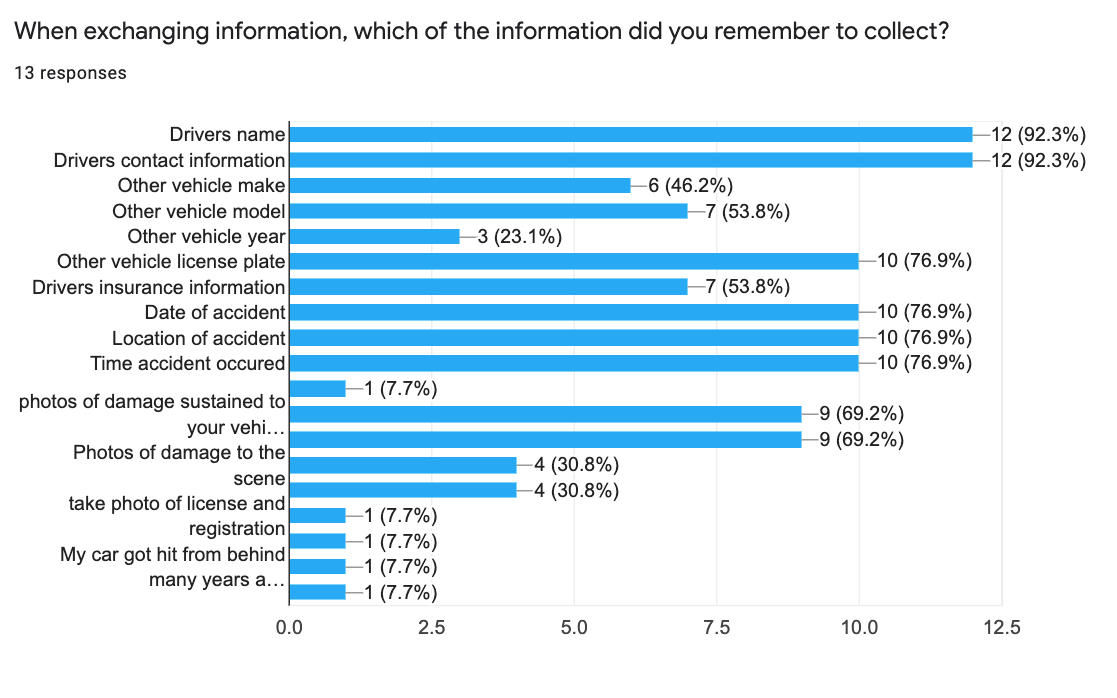
From the research collected, it showed that many people already knew what to do when in a car accident. Therefore, creating an app that ensures people do not forget details is not 100% necessary. After looking at the number of hit & runs that occur on average in BC, there felt a need for more people to help settle any remaining unsolved incidents. Just from the news involving hit & run incidents, the family of the person hit are asking for witnesses to help solve the case and bring peace of mind. In some cases, witnesses and witness reports are crucial in deciding who is at fault in an accident if it was not immediately clear or if the incident was a hit and run.
Therefore, by creating a way for people to easily submit witness reports from their phones, hopefully more people would be willing to act as a witness to help those families. By modifying the problem statement, I shifted the app away from submitting an accident report to submitting a witness report.
From the survey and research conducted I create the proto persona: Civilian Cara. She is an on the go mom who relies heavily on traveling by car to get place to place and run errands.

In this scenario, Civilian Cara witnesses a hit and run involving a biker and a car. She chooses to use the ICBC Reports app to submit a witness report.
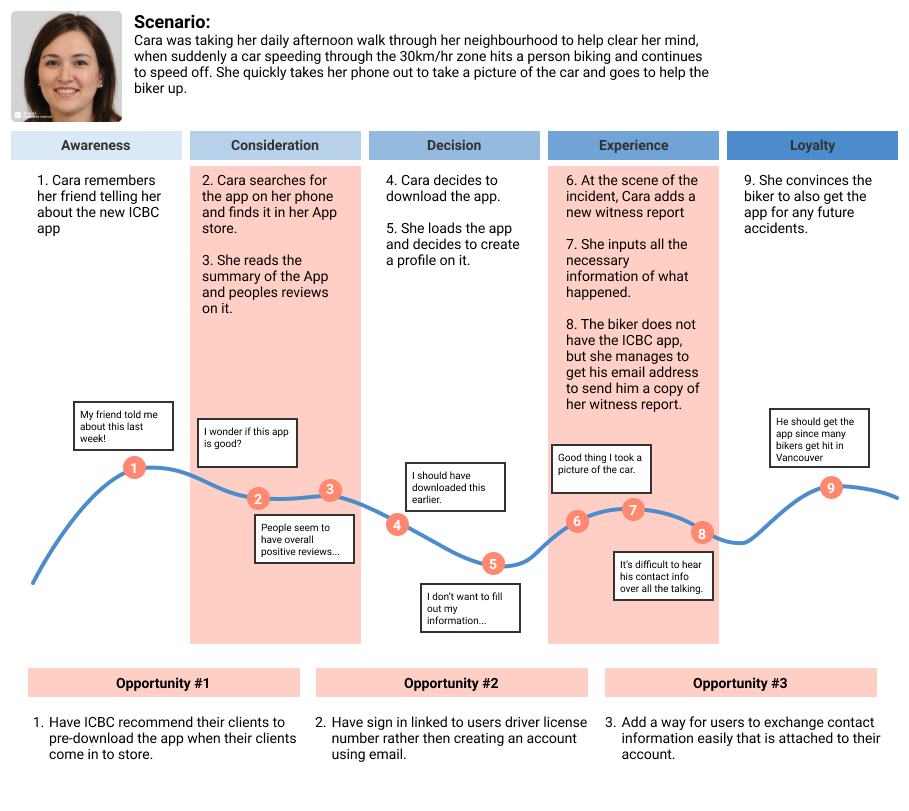
In order to better visualize the overall app and the steps needed to take in order to submit a witness report, I created a corresponding site map and task model. In the task model is shows the steps to create, save, view, and share a witness report.


With the initial sketches, they were made with pen and paper. This allowed me to freely draw whatever initial layouts that first came to mind. In the very first sketches, I had initially planned to include preventative articles on the landing page, however those were removed in later mock ups so that app solely focused on accident and witness reports.
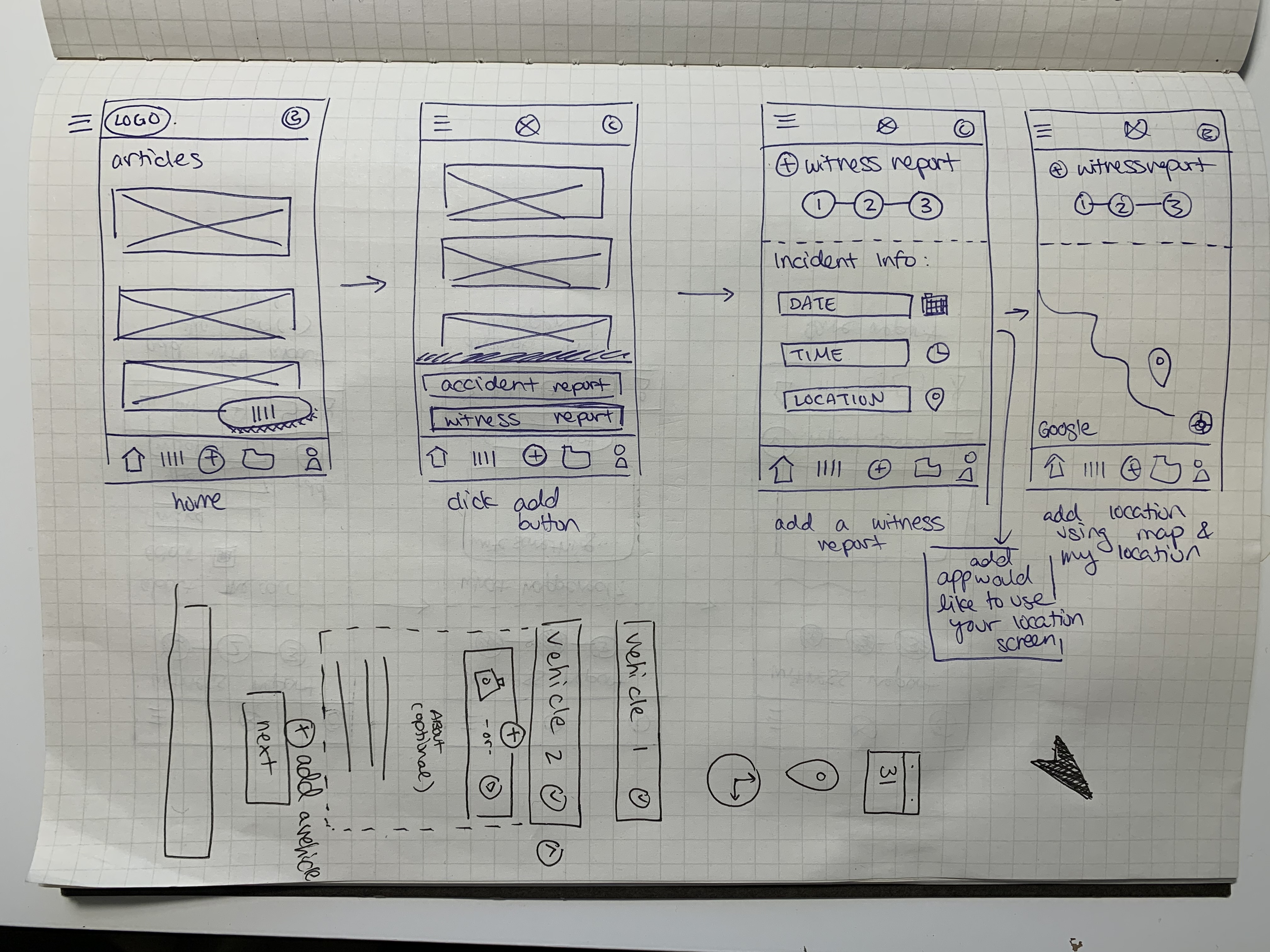


Once I had completed the initial paper sketches, I used Figma to quickly mockup and rapid prototype the wireframes. I then used the rapid prototype to conduct user testing through Maze.
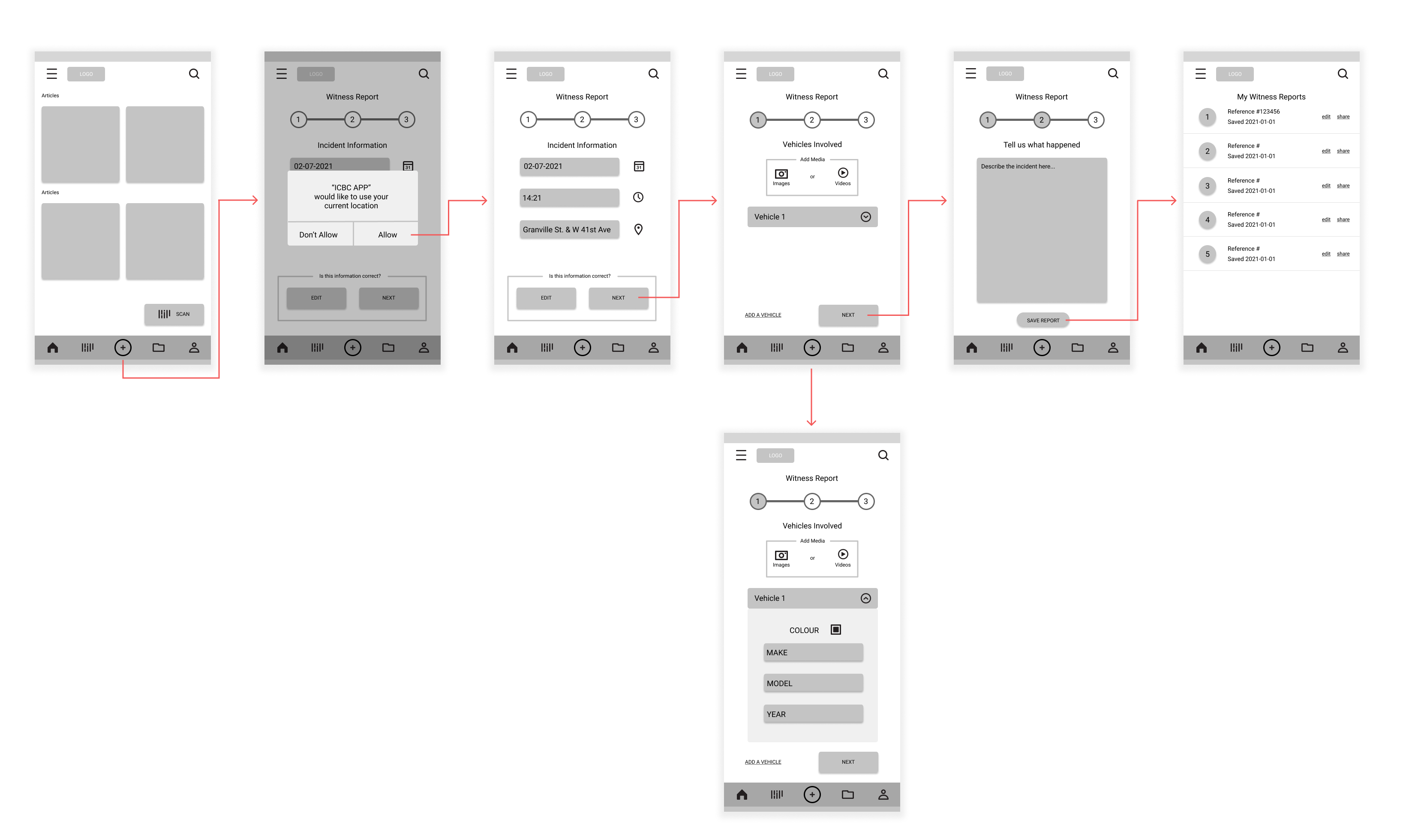
In Maze, I had 4 friends test my rapid prototype. I had not told them prior to testing what my project was about or the goal of the app. In the app, they were asked to create a witness report and share it via email.
Prior to having my friends test my prototype, I had thought that the path sequence to get from the homepage to sharing the report was straight forward and easy to figure out. Although the prototype had not been 100% finished with complete functionality, I was optimistic that they would be able to complete the task smoothly. However, that was not seen after getting back the results.
From these user tests, I found three main takeaways:
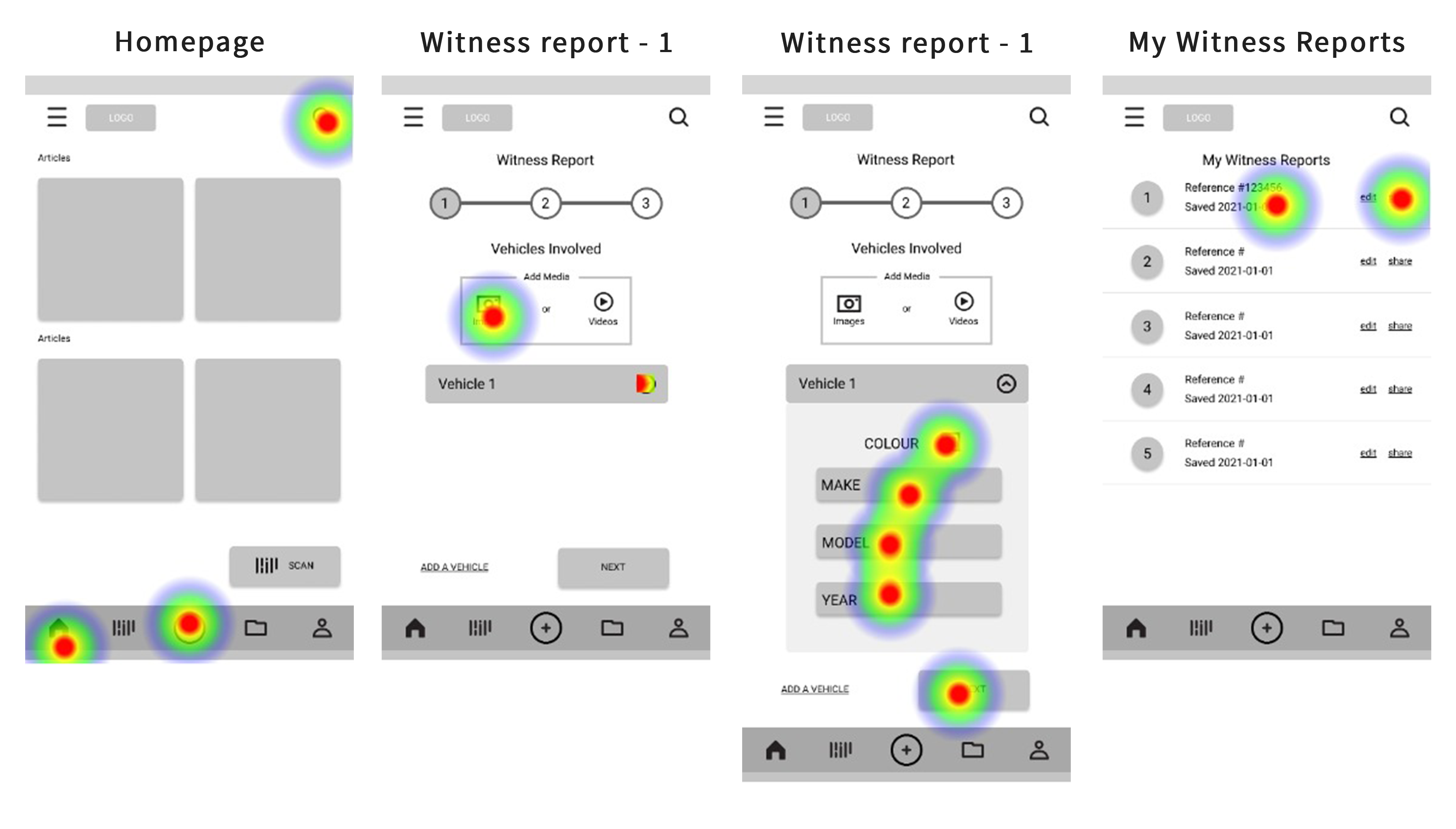
After the Maze user testing, I revised my mockups to include the changes emphasized from the takeaways. The main change that occurred was the addition of labels for all icons to avoid any future confusion.

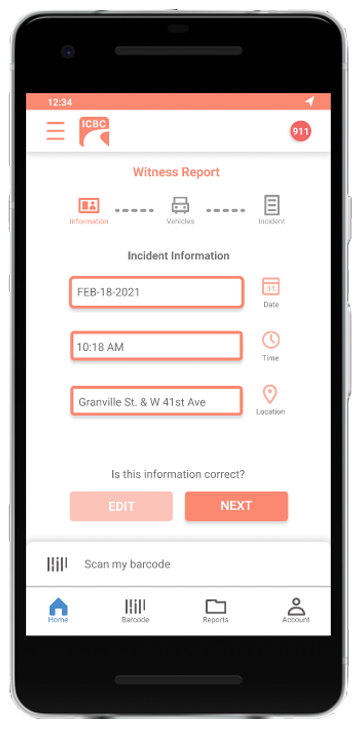

After the mockups were complete, I prototyped them to present for my final assignment. However, I continued to work on them after everything was submitted. I felt that the one month duration given to research and design was not enough to create something that I was truly happy with. Therefore, I continued to tweak the design and layout of the mockups to something that I was more satisfied with as well as something that followed Google’s material design system better.
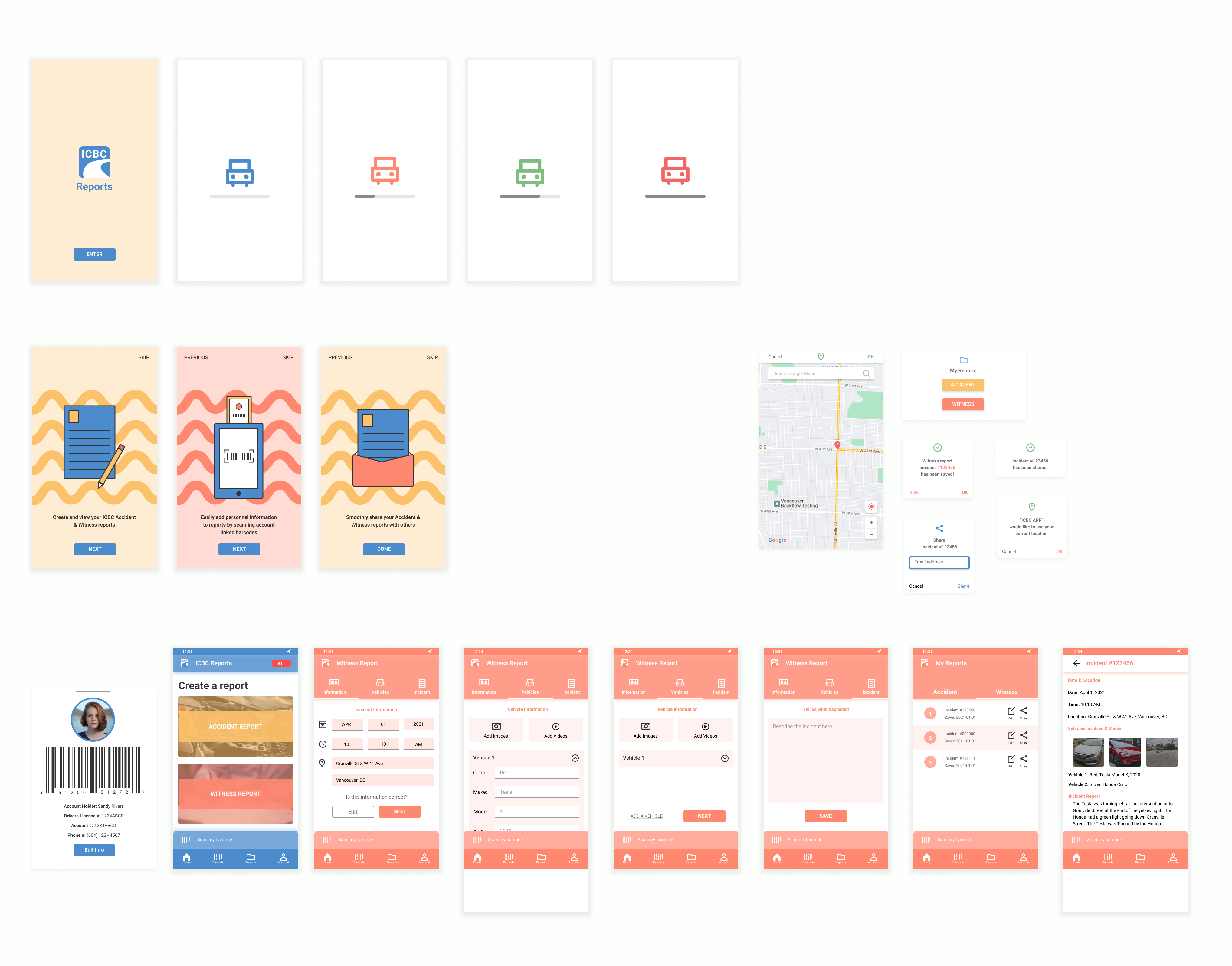
Something that would be interesting if this app was ever created in real life for ICBC would be to explore how the information would be connected between the client and ICBC? I think the process that ICBC would take to ensure that their customers’ information is secure but still easily transferred from the app account to the ICBC claim reviewer would be interesting and would allow me to learn more about the technicality scope when building an app.